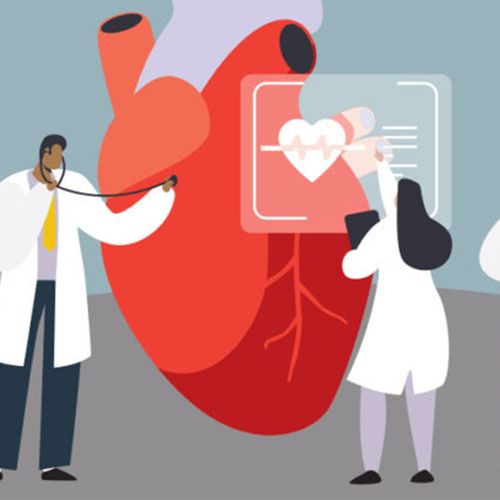Women often aren't being given lifesaving diagnoses and treatments for heart disease, al
though it is their leading cause of death. That's the unequivocal message of several studies. Some of the more troubling findings from these studies include the following…
- Only one of every three women who has a high risk of heart disease is prescribed statins or other cholesterol-lowering medications by her doctor.
- Many women who would benefit from cardiac imaging tests that screen for heart disease are not getting them.
"Since 1984, more women than men die every year from heart disease, according to Dr. Robert Eckel, president of the American Heart Association. "It's not the time for complacency," he adds.
Are Doctors To Blame?
Many people including physicians-seem to be unaware that cardiovascular disease, including stroke, claims the lives of 500,000 women each year.
"This should be old news," says Dr. Stephen Siegel, a clinical assistant professor of medicine at New York University School of Medicine in New York City. "The whole concept of women having heart disease was relatively new 15 or 20 years ago. It's been in the literature, in the lay press, on television, in newspapers for at least 10 years, and the fact that there are still physicians who seem to treat women differently than men is a little bit surprising and disturbing.”
The Study
But according to at least one study, women are, in fact, less likely than men to get preventive recommendations for heart disease from their doctors. This is because physicians tend to perceive heart disease risk as lower in women.
In that study, researchers conducted a national online survey of 100 cardiologists, 100 obstetricians/gynecologists and 300 primarycare physicians. Each doctor was given profiles of patients with the same risk level but different genders, and asked to make recommendations. Despite the equivalent risk profiles, women were much more likely to be classified as "lower risk."
In addition, fewer than one in five physicians were aware that more women than men die of heart disease each year. And although gynecologists reported that they provide primary care to two of every three patients, they acknowledged that they couldn't effectively advise patients on how to prevent cardiovascular disease and manage risk factors. They were also less aware of the national guidelines for cholesterol and blood pressure than were primary-care physicians.
"We could explain the differences in treatment patterns based on the doctor's perception of a patient's risk. Women were more likely to be assigned to be at lower risk despite the fact that...we precalculated the risk to be identical," says Dr. Lori Mosca, director of preventive cardiology at New York-Presbyterian Hospital and associate professor of medicine at Columbia University in New York City. "This suggests that if a physician puts a woman in (the) appropriate risk category, then she will receive equal treatment."
Fewer Meds Prescribed
Another study of 1.1 million women found that almost two-thirds of those who had dangerously high cholesterol levels were not getting the medications they needed. This group of women was at the highest risk for heart attacks and strokes.
Even fewer women received niacin to boost levels of HDL ("good") cholesterol or fibrate therapy to lower triglyceride levels, according to the study.
Finally, a consensus statement from the American Heart Association states that cardiac imaging methods, such as stress single photon emission computed tomography (SPECT) and stress echocardiography, work equally well in women as in men to diagnose coronary artery disease. But women who are at risk for heart disease are not referred for the right tests as often as their male counterparts.
